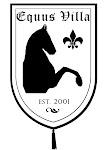
Alfred Munnings was born at Mendham, Suffolk across the River Waveney from Harleston in Norfolk. At fourteen he was apprenticed to a Norwich printer, designing and drawing advertising posters for the next six years, attending the Norwich School of Art in his spare time. When his apprenticeship ended, he became a full time painter. The loss of sight in his right eye in an accident in 1898 did not deflect his determination to paint, and in 1899 two of his pictures were shown at the Royal Academy Summer Exhibition. He painted rural scenes, frequently of subjects such as Gypsies and horses.
He was associated with the Newlyn School of painters.
Munnings career would be associated with equine painting. He used his art to depict horses involving in hunting and he painted racehorses.


Although he volunteered to join the Army, he was assessed as unfit to fight. In 1917, his participation in the war was limited to a civilian job outside of Reading, processing tens of thousands of Canadian horses en route to France—and often death. Later, he was assigned to one of the horse remount depots on the Western Front.

Munnings' talent was employed as war artist to the Canadian Cavalry Brigade under the patronage of Max Aitken in the latter part of the war. During the war he painted many scenes, including a mounted portrait of General Jack Seely Warrior in 1918 (now in the collection of the National Gallery of Canada, Ottawa). Munnings worked on this canvas a few thousand yards from the German front lines. When General Seely's unit was forced into a hasty withdrawal, the artist discovered what it was like to come under shellfire.

The Canadian Forestry Corps invited Munnings to tour their work camps, and he produced drawings, watercolors and paintings, including Draft Horses. This role of horses was critical and under-reported; and in fact, horse fodder was the single largest commodity shipped to the front by some countries.

Munnings was elected president of the Royal Academy of Art in 1944, a post he held until 1949. His presidency is most famous for the departing speech he gave in 1949, attacking modernism. The broadcast was heard by millions of listeners to BBC radio. An evidently inebriated Munnings claimed that the work of Cézanne, Matisse and Picasso had corrupted art. He recalled that Winston Churchill had once said to him, "Alfred, if you met Picasso coming down the street would you join with me in kicking his... something something?" to which Munnings said he replied "Yes Sir, I would".

He was awarded a knighthood in 1944. He died at Castle House, Dedham, Essex, on 17 July 1959. After his death, his wife turned their home in Dedham into a museum of his work. The village pub in Mendham and a street is also named after him.




6 comments:
Ooooo, I like the third grey horse painting. I'd missed that one! Adding to my clip art collection LOL!
A large portion of Lord Beaverbrook's collection is actual located in Fredericton, New Brunswick, Canada. Including several side-saddle pictures, def. place to vist if you are ever in the area!
Many Thanks for another nice post. Munnings is one of my favorite artists. I've added these to my screensaver.
The painting of Princess Mary riding sidesaddle has to be one of my all time favorites.
he certainly knew his horses, didn't he? Beautiful ...thanks for sharing. I love horses!
Just thinking of you today :)
Appreciate the background on Munnings. Love his work and enjoyed the paintings you posted.
Post a Comment